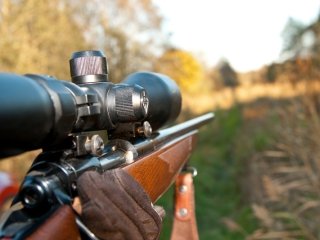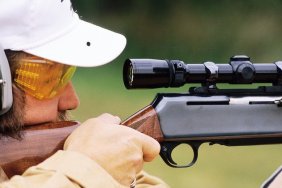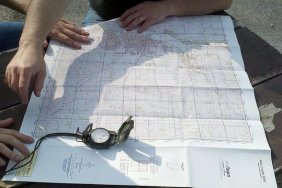 Scopes are the visual interface between the rifle, the shooter and the target. Good rifle scopes improve the shooter’s accuracy by showing larger, clearer views of the target. Rifle scopes are somewhat unique because they improve the shooter’s view of the target. They don’t make you a better shooter and they don’t improve the actual accuracy of the rifle or how close two bullets will hit to each other with the exact same aiming point. At the same time, for distance shooting, you can’t shoot more accurately than you can see! This makes a quality scope a necessity for building an accurate rifle.
Scopes are the visual interface between the rifle, the shooter and the target. Good rifle scopes improve the shooter’s accuracy by showing larger, clearer views of the target. Rifle scopes are somewhat unique because they improve the shooter’s view of the target. They don’t make you a better shooter and they don’t improve the actual accuracy of the rifle or how close two bullets will hit to each other with the exact same aiming point. At the same time, for distance shooting, you can’t shoot more accurately than you can see! This makes a quality scope a necessity for building an accurate rifle.
At this point you have to go back to the purpose of the gun you are working on. Is the primary goal a lightweight accurate hunting rifle or is this a bench gun? Scope size, durability, magnification, and reticle (sight picture) are all determined by balancing what is available with the end use that is needed. For example, building a hunting rifle with a goal of being very accurate for shooting out to five hundred yards, you may also need to shoot quickly at distances well under 100 yards. The need for close and long shooting means you will need a scope that is variable from 3 to 5 power for short range rapid target acquisition as well as 12-16 power for a good sight picture on distant shots. At the same time, a scope for hunting can’t be HUGE and should be durable and have quality base and rings.
If the rifle were strictly for bench shooting or competition, the size of the scope and low end magnification are less important. A large high magnification scope can give the best sight picture for consistently long range shooting.
Reticle design is mostly a matter of personal preference. Standard crosshairs work just fine. I prefer the style with darker, thicker lines giving way to precise crosshairs in the center for quick acquisition and fine aiming point. The newer multi reticle designs for multiple aiming points at different distances and mil dot styles are worth a close look for shooters trying to extend their range and accuracy. The trick with multiple aiming points is that different bullets aren’t going to match the zero on the secondary aiming points exactly. Only field testing will determine the exact zero of the secondary points.
No discussion of rifle scopes today would be complete without a discussion of range finders. Although range finders are a separate piece of equipment, they are also the hidden ingredient in accuracy. Range guessing will put you outside of “minute of deer” accuracy very quickly in long range situations. Even in relatively simple terrain, a snap judgment in distance is inaccurate. At longer distances with terrain variations, the most accurate rifle in the world won’t help.








